Analysis of Spatio-Temporal Characteristics of Visibility in the Yellow and Bohai Seas Based on Observational Data
Abstract
1. Introduction
2. Materials and Methods
3. Results
3.1. Annual and Seasonal Characteristics of Visibility
3.2. Monthly Characteristics of Visibility
3.3. Intraday Variations of Visibility
3.4. Characteristics of Low Visibility
4. Discussion
5. Conclusions
- (1)
- Between 2019 and 2021, the annual average visibility of the Yellow Sea and Bohai Sea was 13.346 km, and the standard deviation of the annual average visibility was 4.351 km. There were obvious differences in the distribution of visibility across the seasons. The maximum average visibility was 15.514 km, in autumn. The minimum average visibility of 12.529 km occurred in summer. The maximum standard deviation of visibility of 4.749 km was recorded in winter and the minimum standard deviation of 3.612 km was recorded in summer. The highest values of visibility distribution in winter and spring were in the range of 12–14 km, while the highest values of visibility distribution in summer and autumn were in the range of 10–12 km and 16–18 km, respectively. The areas of low visibility appear in the southwest of the Yellow Sea in spring. The areas of high visibility occur in the northern part of the Bohai and Yellow Seas in autumn. The low visibility area is mainly distributed in the southwest of the Yellow Sea.
- (2)
- Changes in monthly median visibility were similar to changes in average value. The monthly visibility was high from September to November. The average value of visibility was highest in October and lowest in July. In July, the maximum visibility is low, and the minimum visibility is high. The visibility has obvious intraday variation characteristics. The visibility around sunset is significantly higher than that around sunrise. The hourly visibility is low between 4:00 and 9:00, with low visibility most likely around 7:00. The hourly visibility is high between 16:00 and 21:00, and high visibility most likely around 18:00.
- (3)
- Between November and April, low visibility occurs frequently, most frequently in March. Between July and October, the frequency of low visibility was relatively low. Low visibility occurred frequently between 4:00 and 7:00. The change of low visibility in the Yellow and Bohai Seas can be divided into three stages: many, medium and few. The many stage of low visibility is from November to April of the next year. The medium stage is May and June. The few stage is from July to October. In the Yellow and Bohai seas, low visibility mainly occurs at any time between November and April, and also during mornings between May and August. It occurs less often at other times.
Author Contributions
Funding
Institutional Review Board Statement
Informed Consent Statement
Data Availability Statement
Acknowledgments
Conflicts of Interest
References
- Wu, D.; Wu, X.J.; Zhu, X.X. Fog and Haze; China Meteorological Press: Beijing, China, 2009. [Google Scholar]
- Fu, G.; Li, P.Y.; Zhang, S.P.; Gao, S.H. A Brief Overview of the Sea Fog Study in China. Adv. Meteor. Sci. Technol. 2016, 2, 20–28. [Google Scholar]
- Niu, S.J.; Lu, C.S.; Lü, J.J.; Xu, F.; Zhao, L.J.; Liu, D.Y.; Yue, Y.Y.; Zhou, Y.; Yu, H.Y.; Wang, T.S. Advances in Fog Research in China. Adv. Meteor. Sci. Technol. 2016, 2, 6–14. [Google Scholar]
- Zhang, G.C. The Progress of Fog Forecast Operation in China. Adv. Meteor. Sci. Technol. 2016, 2, 42–48. [Google Scholar]
- Tanimoto, Y.; Xie, S.P.; Kai, K.; Okajima, H.; Tokinaga, H.; Murayama, T.; Nonaka, M.; Nakamura, H. Observations of marine atmospheric boundary layer transitions across the summer Kuroshio Extension. J. Clim. 2009, 6, 1360–1374. [Google Scholar] [CrossRef]
- Zhang, S.P.; Zhang, X.; Shi, X.M. Observational analysis of a fog event in the Oyashio Extension area. J. Mar. Meteorol. 2022, 1, 1–11. [Google Scholar]
- WMO: Guide to Meteorological Instruments and Methods of Observation, 7th ed.; WMO-No. 8; World Meteorological Organization: Geneva, Switzerland, 2008.
- Wu, D.; Lu, B.; Zhang, T.C.; Yan, F.Q. A method of detecting sea fogs using CALIOP data and its application to improve MODIS-based sea fog detection. J. Quant. Spectrosc. Radiat. Transf. 2015, 153, 88–94. [Google Scholar] [CrossRef]
- Wu, X.J.; Li, Y.; Huang, B.; Wang, X.; Song, W. Application of dynamic threshold method to sea fog detection with FY-2 satellite. J. Mar. Meteor. 2017, 2, 31–41. [Google Scholar]
- Fu, G.; Xu, J.; Zhang, S.Q. Comparison of Modeling Atmospheric Visibility with Visible Satellite Imagery. Period. Ocean Univ. China 2011, 4, 1–10. [Google Scholar]
- Wang, Y.M.; Gao, S.H.; Fu, G.; Sun, J.L.; Zhang, S.P. Assimilating MTSAT-derived humidity in nowcasting sea fog over the Yellow Sea. Weather. Forecast. 2014, 29, 205–225. [Google Scholar] [CrossRef]
- Jiang, Y.X.; Zhang, S.P.; Xie, S.P.; Chen, Y.; Liu, H.K. Effects of a cold ocean eddy on local atmospheric boundary layer near the Kuroshio Extension: In situ observations and model experiments. J. Geophys. Res. 2019, 11, 5779–5790. [Google Scholar] [CrossRef]
- Tian, M.; Wu, B.G.; Huang, H.; Zhang, H.S.; Zhang, W.Y.; Wang, Z.Y. Impact of water vapor transfer on a Circum-Bohai-Sea heavy fog: Observation and numerical simulation. Atmos. Res. 2019, 229, 1–22. [Google Scholar] [CrossRef]
- Koracin, D.; Dorman, C.E. Marine Fog: Challenges and Advancements in Observations, Modeling, and Forecasting; Springer International Publishing: Cham, Switzerland, 2017. [Google Scholar]
- Fu, G.; Song, Y.J. Climatology Characteristics of Sea Fog Frequency over the Northern Pacific. Period. Ocean Univ. China 2014, 10, 35–41. [Google Scholar]
- Philip, A.; Bergot, T.; Bouteloup, Y.; Bouyssel, F. The impact of vertical resolution on fog forecasting in the kilometric-scale model AROME: A case study and statistics. Weather. Forecast. 2016, 5, 1655–1671. [Google Scholar] [CrossRef]
- Koracin, D.; Dorman, C.E.; Lewis, J.M.; Hudson, J.G.; Wilcox, E.M.; Torregrosa, A. Marine fog: A review. Atmos. Res. 2014, 143, 142–175. [Google Scholar] [CrossRef]
- Zhang, S.P.; Xie, S.P.; Liu, Q.Y.; Yang, Y.Q.; Wang, X.G.; Ren, Z.P. Seasonal variations of Yellow Sea fog: Observations and mechanisms. J. Clim. 2009, 24, 6758–6772. [Google Scholar] [CrossRef]
- Goodman, J. The microstructure of California coastal fog and stratus. J. Appl. Meteorol. Clim. 1977, 10, 1056–1067. [Google Scholar] [CrossRef]
- Pilie, R.; Mack, E.; Rogers, C.; Katz, U.; Kocmond, W. The formation of marine fog and the development of fog-stratus systems along the California Coast. J. Appl. Meteorol. Clim. 1979, 18, 1275–1286. [Google Scholar] [CrossRef]
- Findlater, J.; Roach, W.; McHugh, B. The haar of North-East Scotland. Q. J. Roy. Meteor. Soc. 1989, 115, 581–608. [Google Scholar] [CrossRef]
- Moores, J.E.; Komguem, L.; Whiteway, J.A.; Lemmon, M.T.; Dickinson, C.; Daerden, F. Observations of near-surface fog at the Phoenix Mars landing site. Geophys. Res. Lett. 2011, 38, L04203. [Google Scholar] [CrossRef]
- Lewis, J.M.; Koracin, D.; Redmond, K.T. Sea fog research in the United Kingdom and United States: A historical essay including outlook. B. Am. Meteorol. Soc. 2004, 3, 395–408. [Google Scholar] [CrossRef]
- Lewis, J.M.; Koracin, D.; Rabin, R.; Businger, J. Sea fog off the California Coast: Viewed in the Context of Transient Weather Systems. J. Geophys. Res. 2003, 108, 4457. [Google Scholar] [CrossRef]
- Oliver, D.A.; Lewellen, W.S.; Williamson, G.G. The interaction between turbulent and radiative transport in the evelopment of fog and low level stratus. J. Atmos. Sci. 1978, 35, 301–316. [Google Scholar]
- Fan, G.F.; Ma, H.; Zhang, X.W.; Liu, Y. Impacts of relative humidity and PM2.5 concentration on atmospheric visibility: A comparative study of hourly observations of multiple stations. Acta. Meteor. Sin. 2016, 6, 959–973. [Google Scholar]
- Xiao, S.R.; Zhou, J.; Wu, Q.Y.; Xu, M.; Shang, G.Q.; Shi, L.F. Improved method for nighttime visibility measurement based on digital photography. Appl. Opt. 2014, 6, 1016–1022. [Google Scholar]
- Zhao, L.J.; Niu, S.J.; Zhang, Y.; Xu, F. Microphysical characteristics of sea fog over the east coast of Leizhou Peninsula, China. Adv. Atmos. Sci. 2013, 4, 1154–1172. [Google Scholar] [CrossRef]
- Qu, P.; Xie, Y.Y.; Liu, L.L.; Lin, Y.; He, N.G. Character Analysis of Sea Fog in Bohai Bay from 1988 to 2010. Plateau Meteor. 2014, 1, 285–293. [Google Scholar]
- Yang, M.; Guo, X.Y.; Zheng, J.Y.; Sun, Q. Long-Term Trend and Inter-Annual Variation of Ocean Heat Content in the Bohai, Yellow, and East China Seas. Water 2022, 17, 2763. [Google Scholar] [CrossRef]
- China Meteorological Administration. Specification for Automatic Ground Meteorological Observation; China Meteorological Press: Beijing, China, 2020. [Google Scholar]
- GB/T 12763.3-2020; National Standards of the People’s Republic of China—Specifications for Marine Survey—Part 3: Marine Meteorological Observations. Ministry of Natural Resources: Beijing, China, 2020.
- Organization, W.M. WMO Guide to Meteorological Instruments and Methods of Observation. World Meteorological Organization (WMO): Geneva, Switzerland, 2008. [Google Scholar]
- Hersbach, H.; Bell, B.; Berrisford, P.; Hirahara, S.; Horányi, A.; Muñoz-Sabater, J.; Nicolas, J.; Peubey, C.; Radu, R.; Schepers, D.; et al. The ERA5 global reanalysis. Q. J. R. Meteorol. Soc. 2020, 146, 1999–2049. [Google Scholar] [CrossRef]
- Amidror, I. Scattered data interpolation methods for electronic imaging systems: A survey. J. Electron. Imaging. 2002, 2, 157–176. [Google Scholar] [CrossRef]
- IMO. Convention on the International Regulations for Preventing Collisions at Sea, 1972 (COLREGs). Available online: https://www.imo.org/en/About/Conventions/Pages/COLREG.aspx (accessed on 30 June 2023).
- Wu, X.J.; Li, S.M.; Liao, M.; Cao, Z.Q.; Wang, L.; Zhu, J. Analyses of seasonal feature of sea fog over the Yellow Sea and Bohai Sea based on the recent 20 years of satellite remote sensing data. Acta. Oceanol. Sin. 2015, 1, 63–72. [Google Scholar]
- Zheng, Y.; Li, R.; Shi, D.D.; Wang, Y.N.; Sun, M.N. Characteristics of offshore and coastal sea fog in the mid-west Bohai Sea. Mar. Forecasts 2016, 6, 74–80. [Google Scholar]
- Griffing, G.W. Relations between the prevailing visibility, nephelometer scattering coefficient and sunphotometer turbidity coefficient. Atmos. Environ. 1980, 14, 577–584. [Google Scholar] [CrossRef]
- Chen, J.; Zhao, C.S. A Review of Influence Factors and Calculation of Atmospheric Low Visibility. Adv. Meteor. Sci. Technol. 2014, 4, 44–51. [Google Scholar]
- Clark, P.A.; Harcourt, S.A.; Macpherson, B.; Mathison, C.T.; Cusack, S.; Naylor, M. Prediction of visibility and aerosol within the operational Met Office unified model. I: Model formulation and variational assimilation. Q. J. R. Meteorol. Soc. 2008, 134, 1801–1816. [Google Scholar] [CrossRef]
- Liu, D.Y.; Yan, W.L.; Qian, J.L.; Liu, M.; Wang, Z.D.; Cheng, M.N.; Peng, H.Q. A movable fog-haze boundary layer conceptual model over Jianghuai area, China. Front. Environ. Sci. 2021, 9, 802316. [Google Scholar] [CrossRef]
- Qian, J.L.; Liu, D.Y.; Yan, S.Q.; Cheng, M.N.; Liao, R.W.; Niu, S.J.; Yan, W.L.; Zha, S.Y.; Wang, L.L.; Chen, X.X. Fog scavenging of particulate matters in air pollution events: Observation and simulation in the Yangtze River Delta, China. Sci. Total. Environ. 2023, 876, 162728. [Google Scholar] [CrossRef]
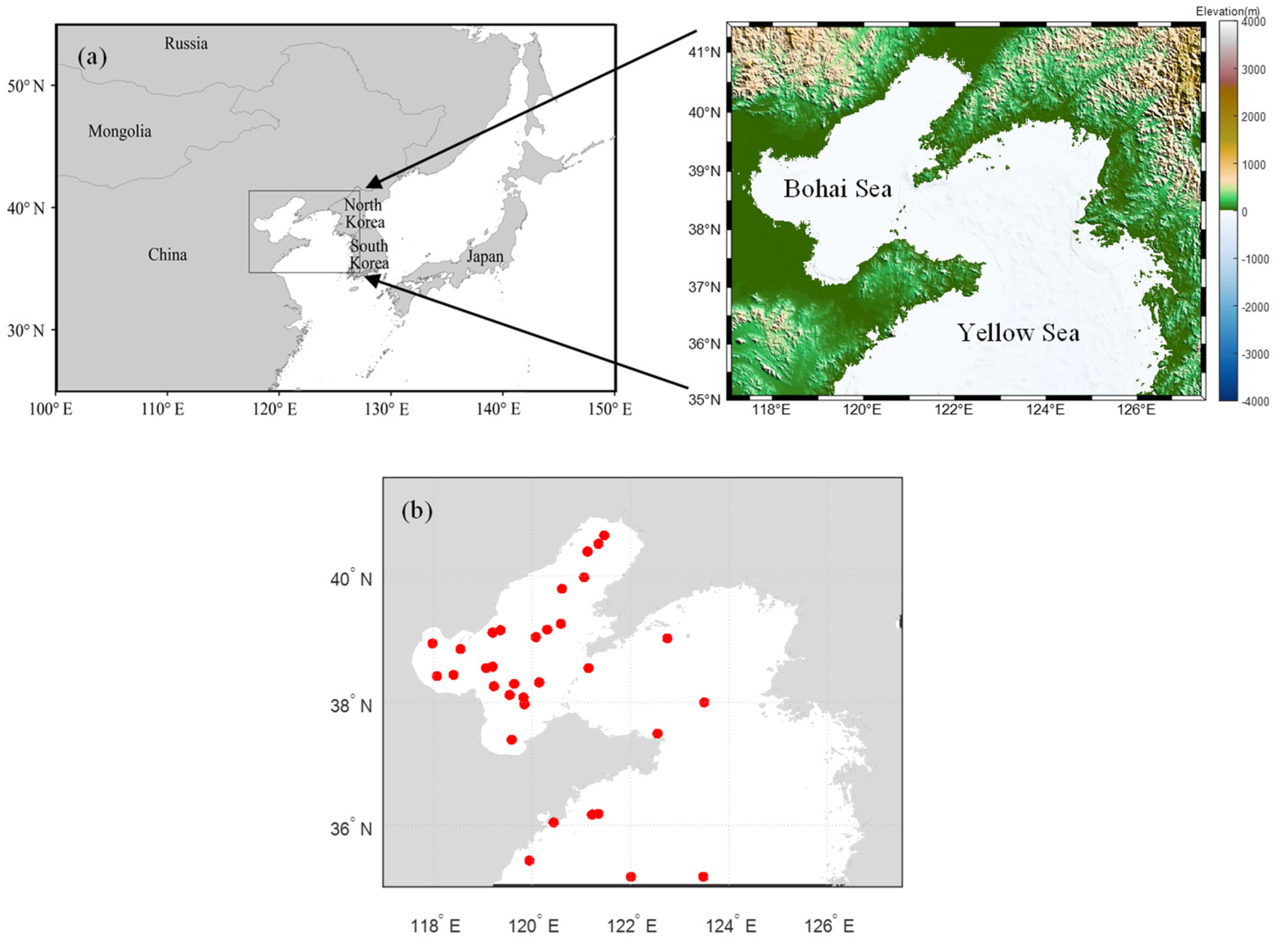
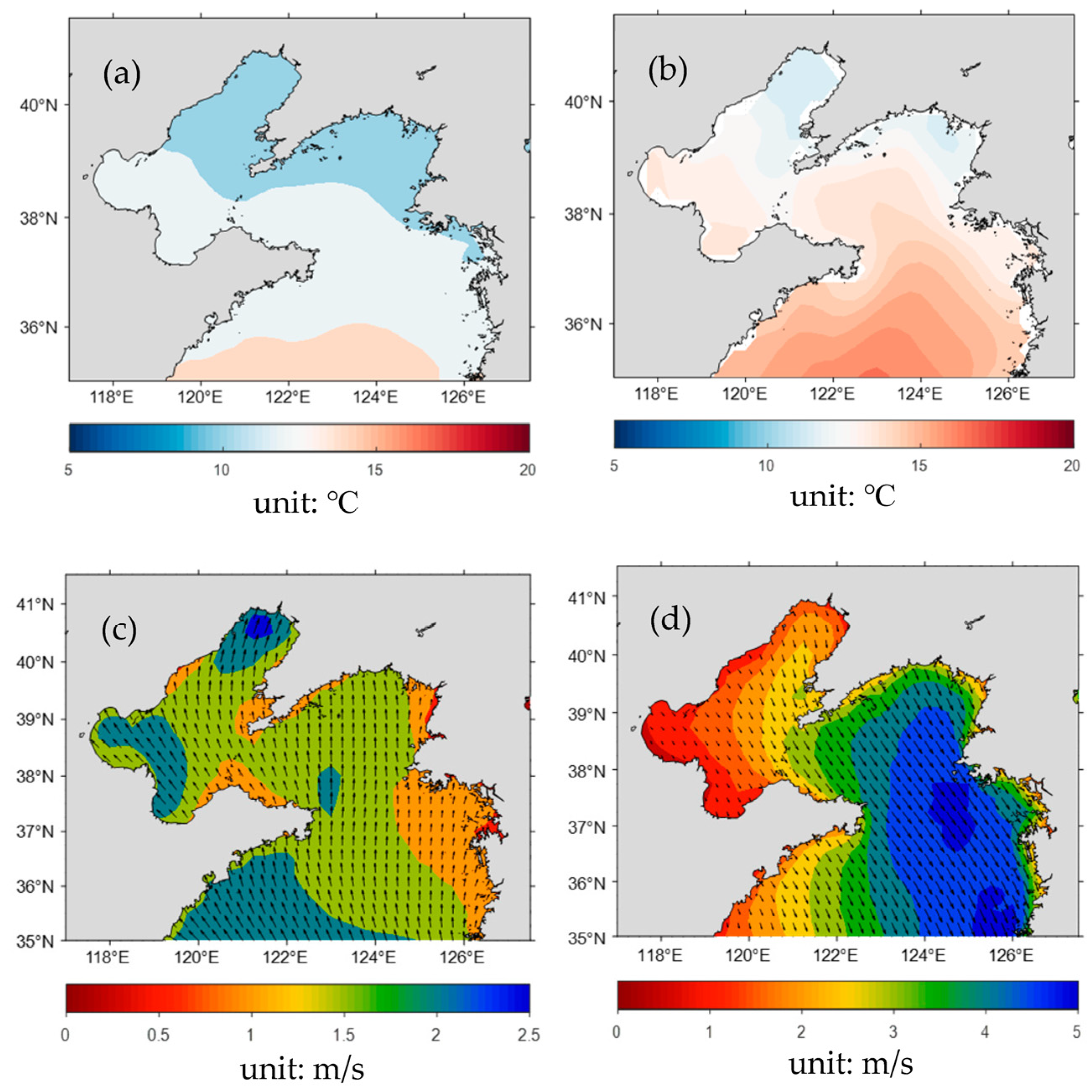

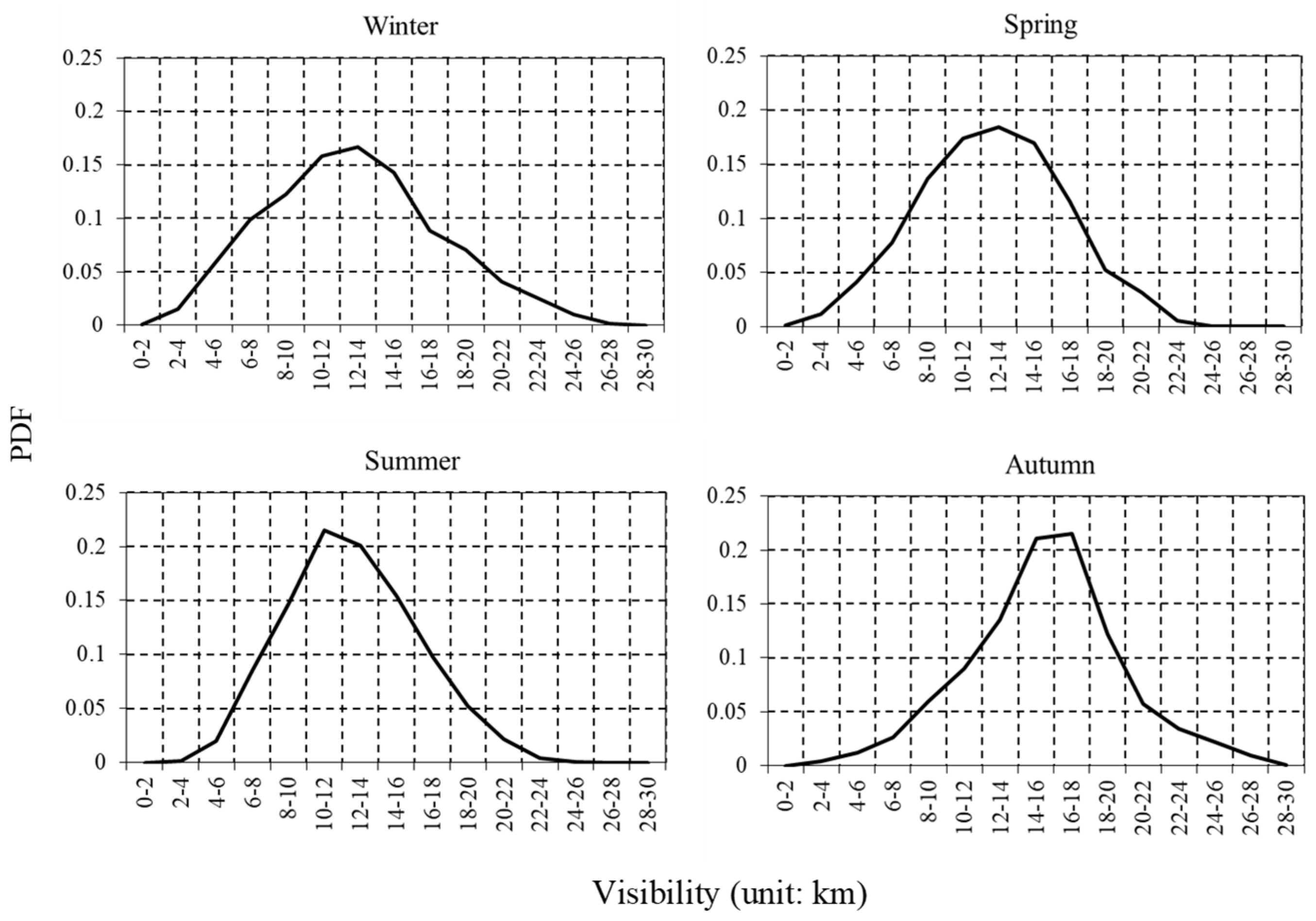
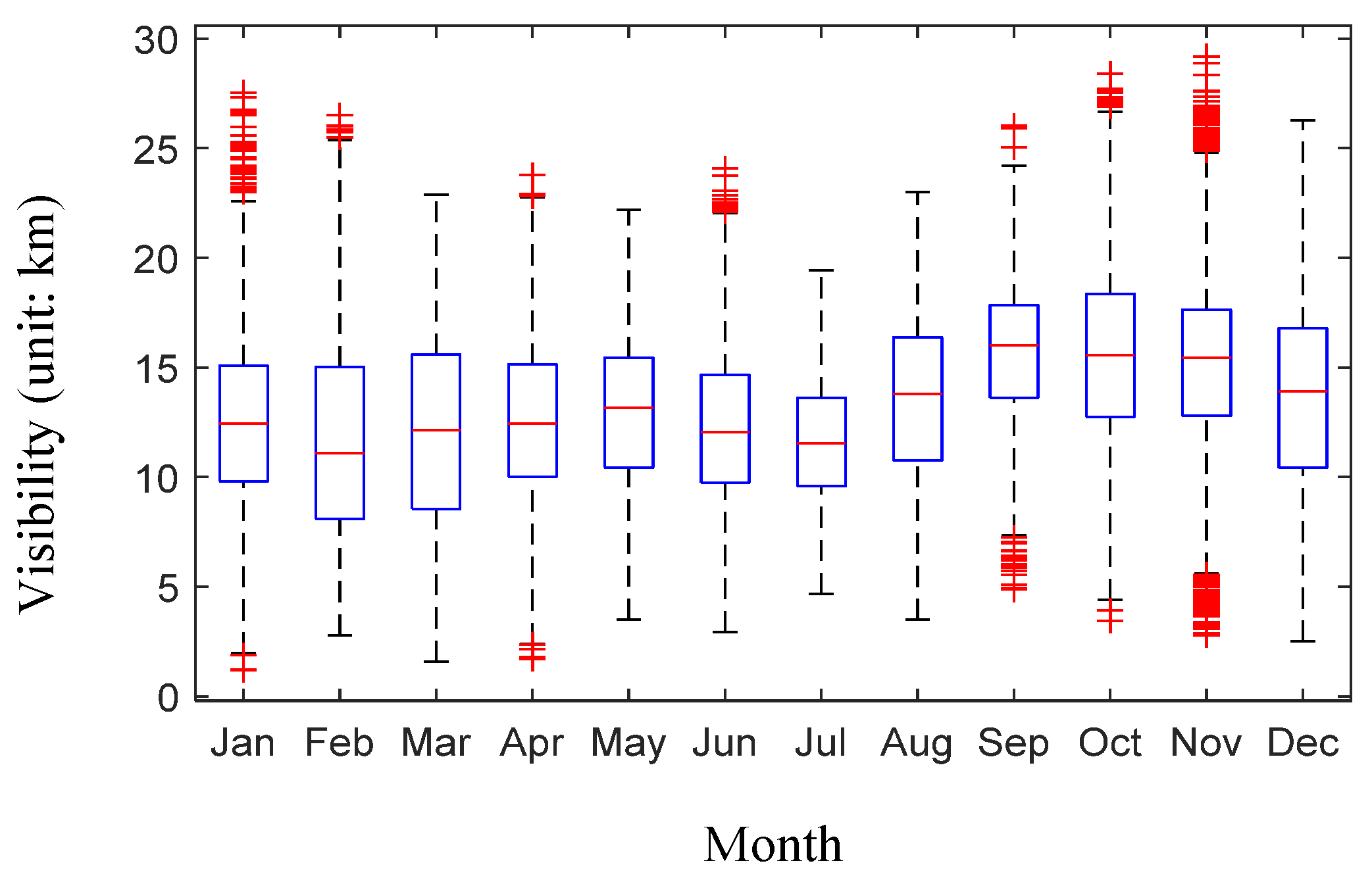
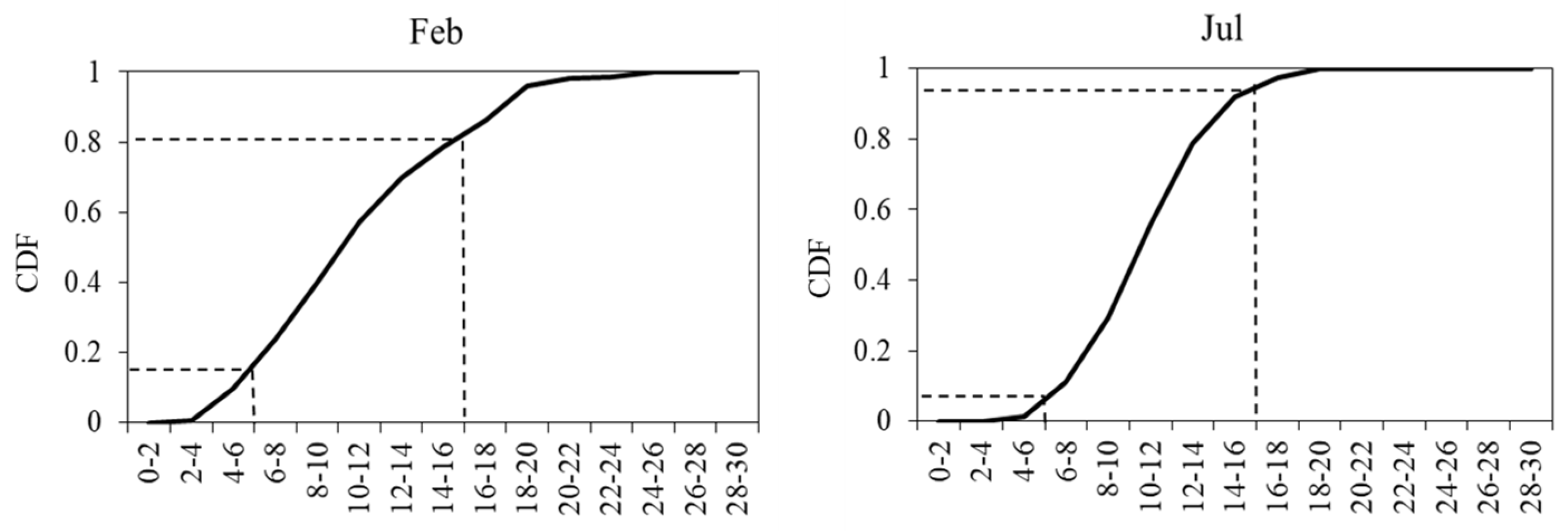
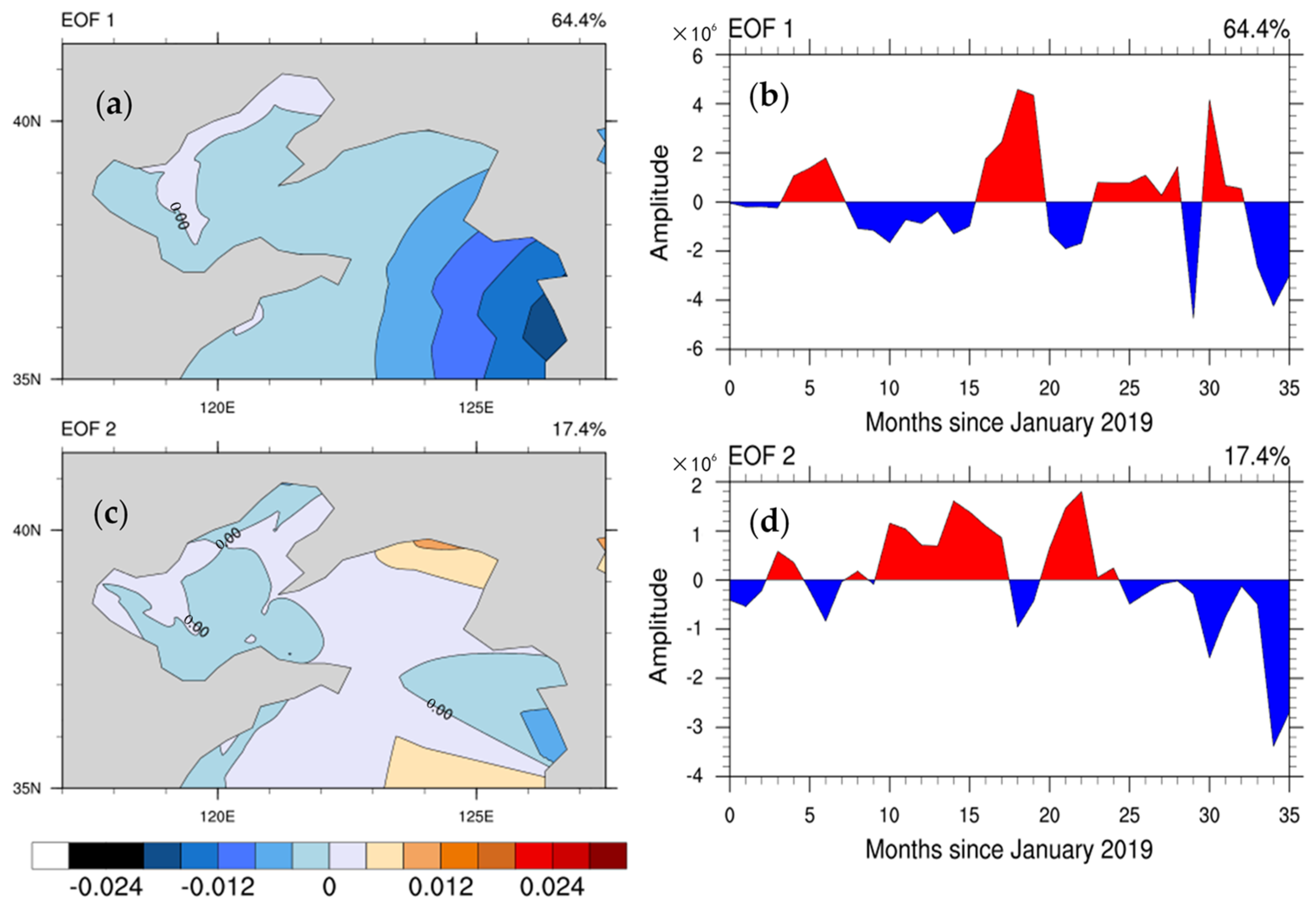
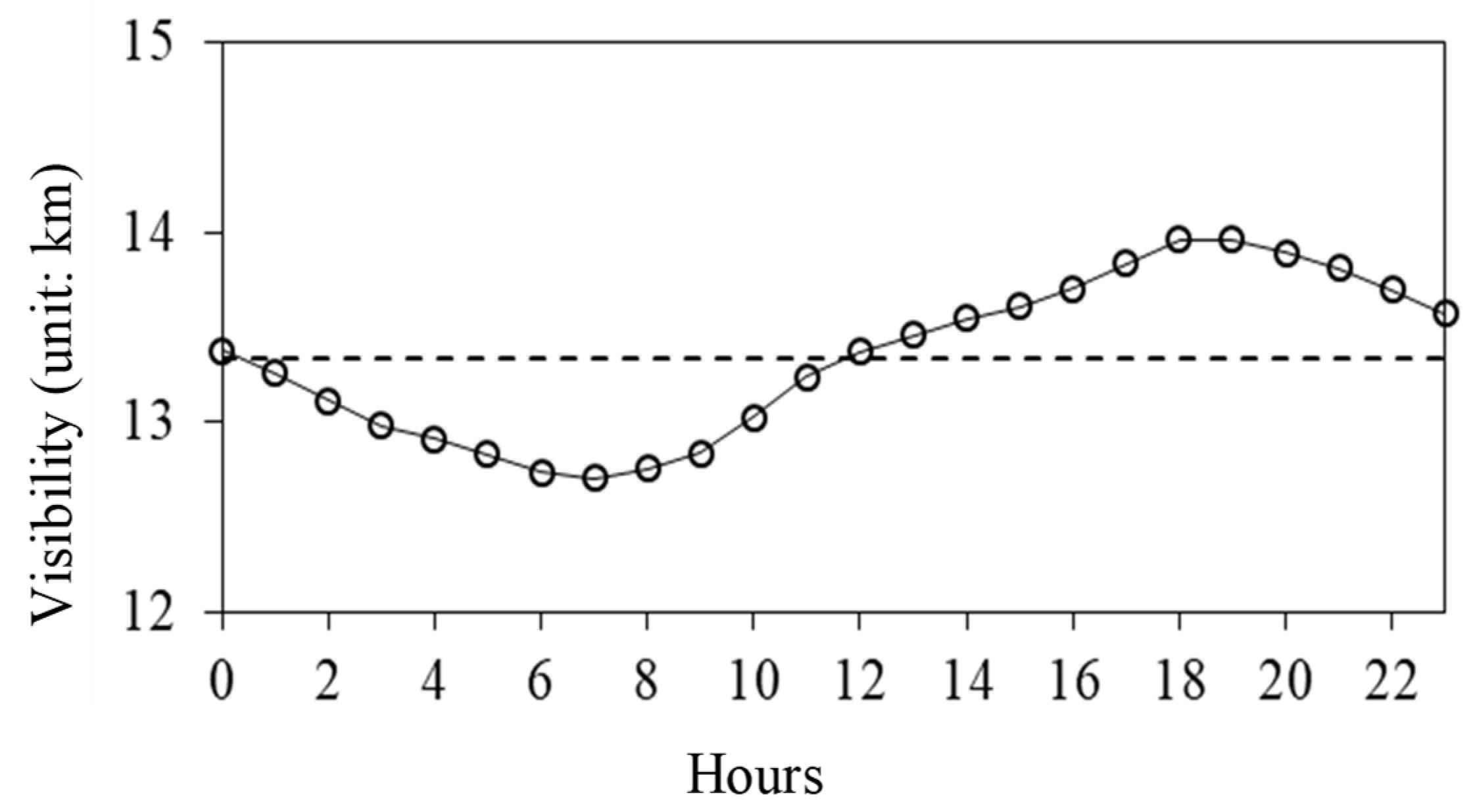
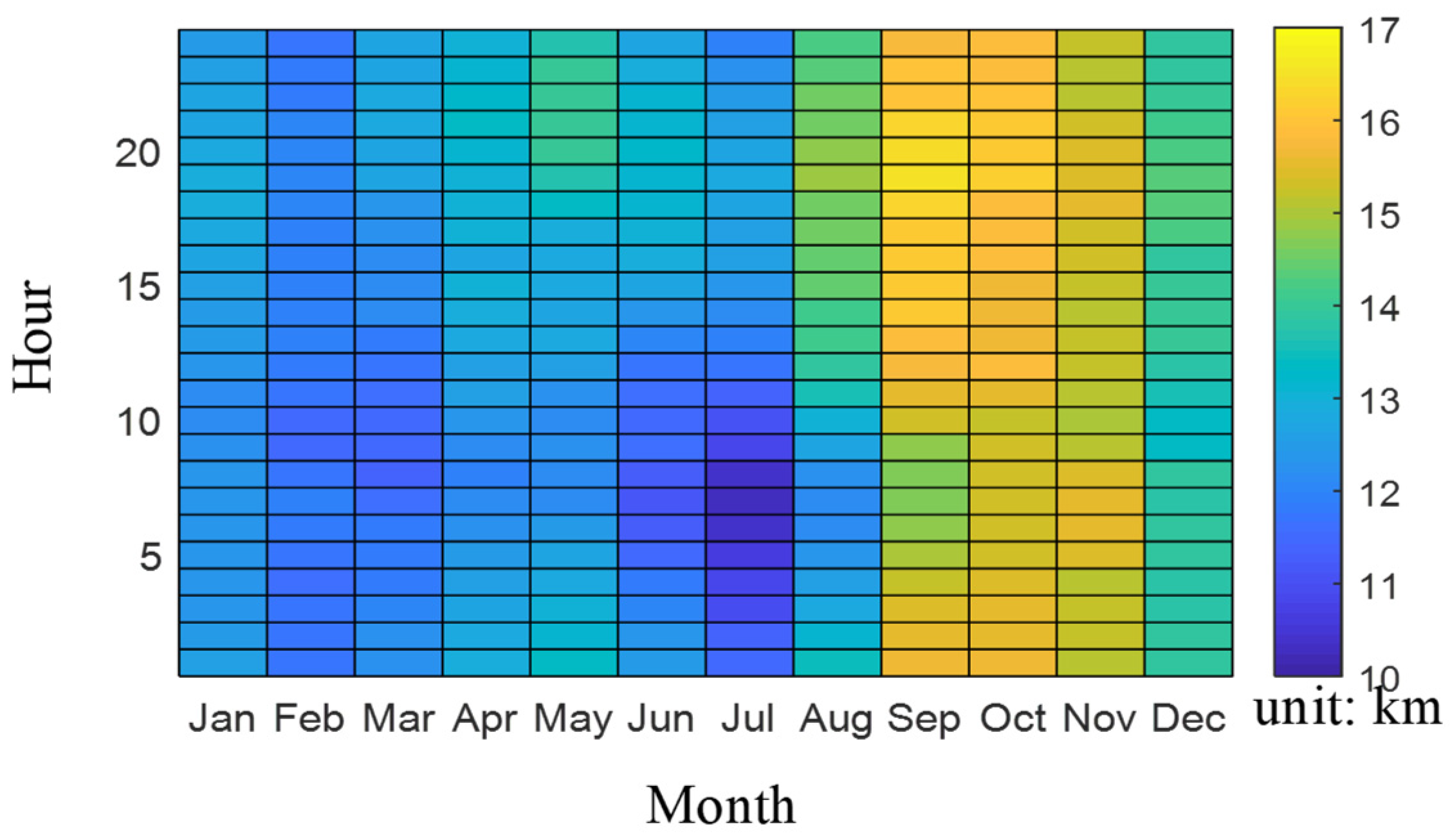
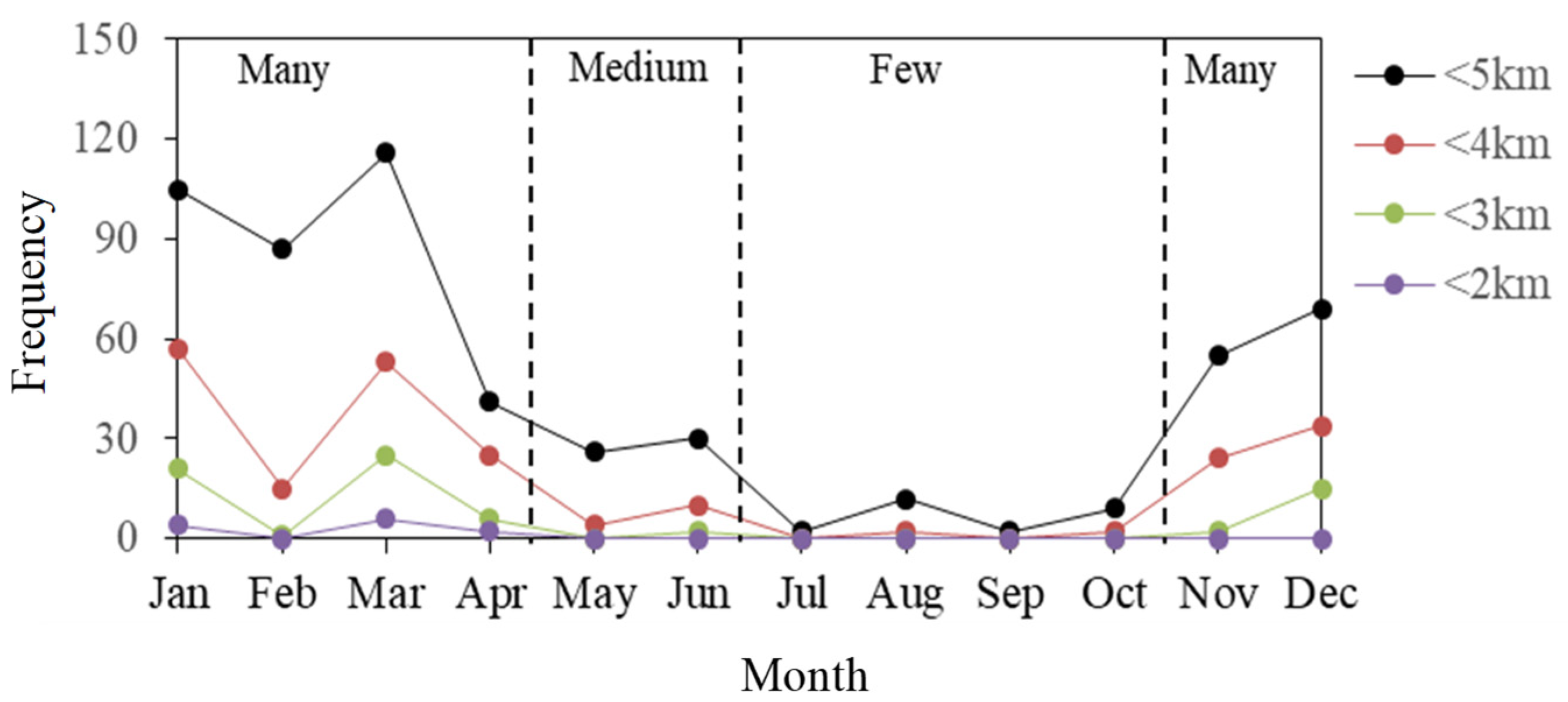
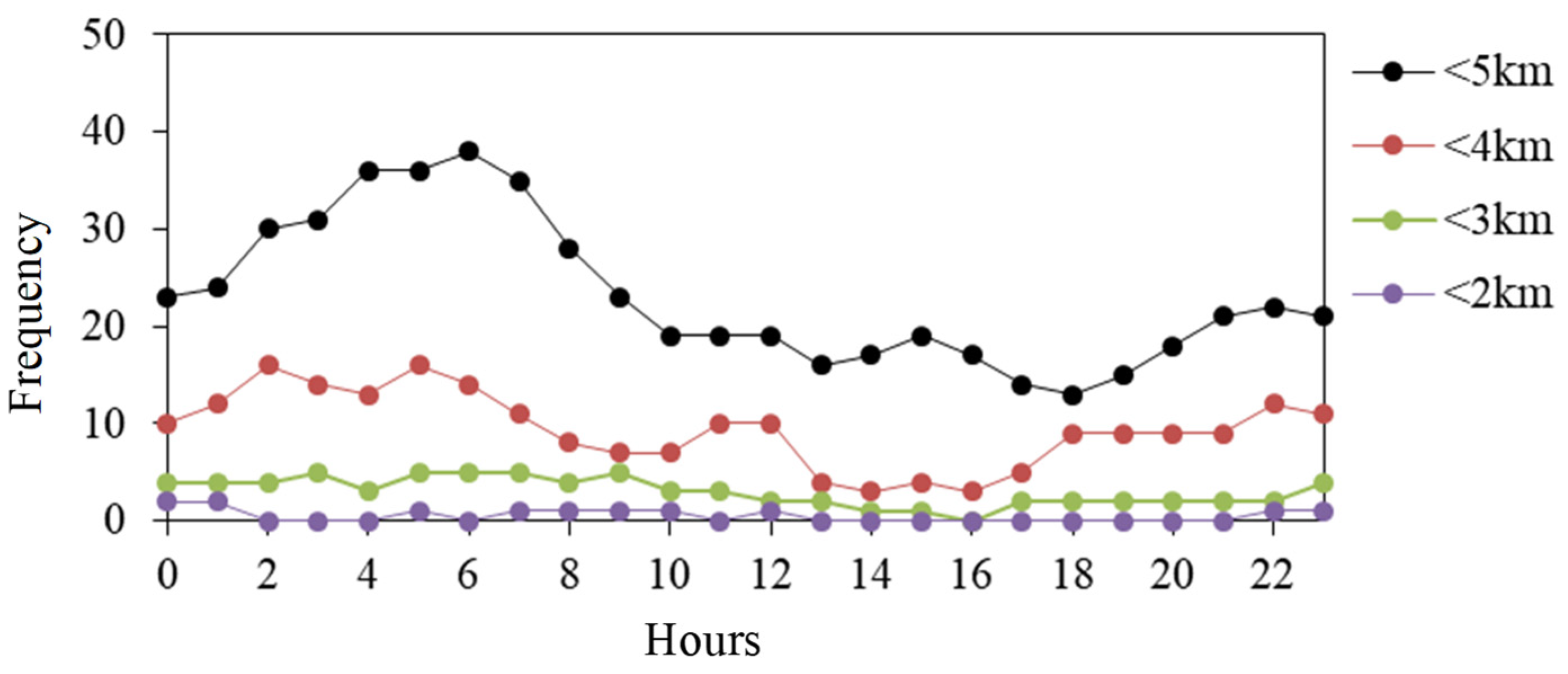
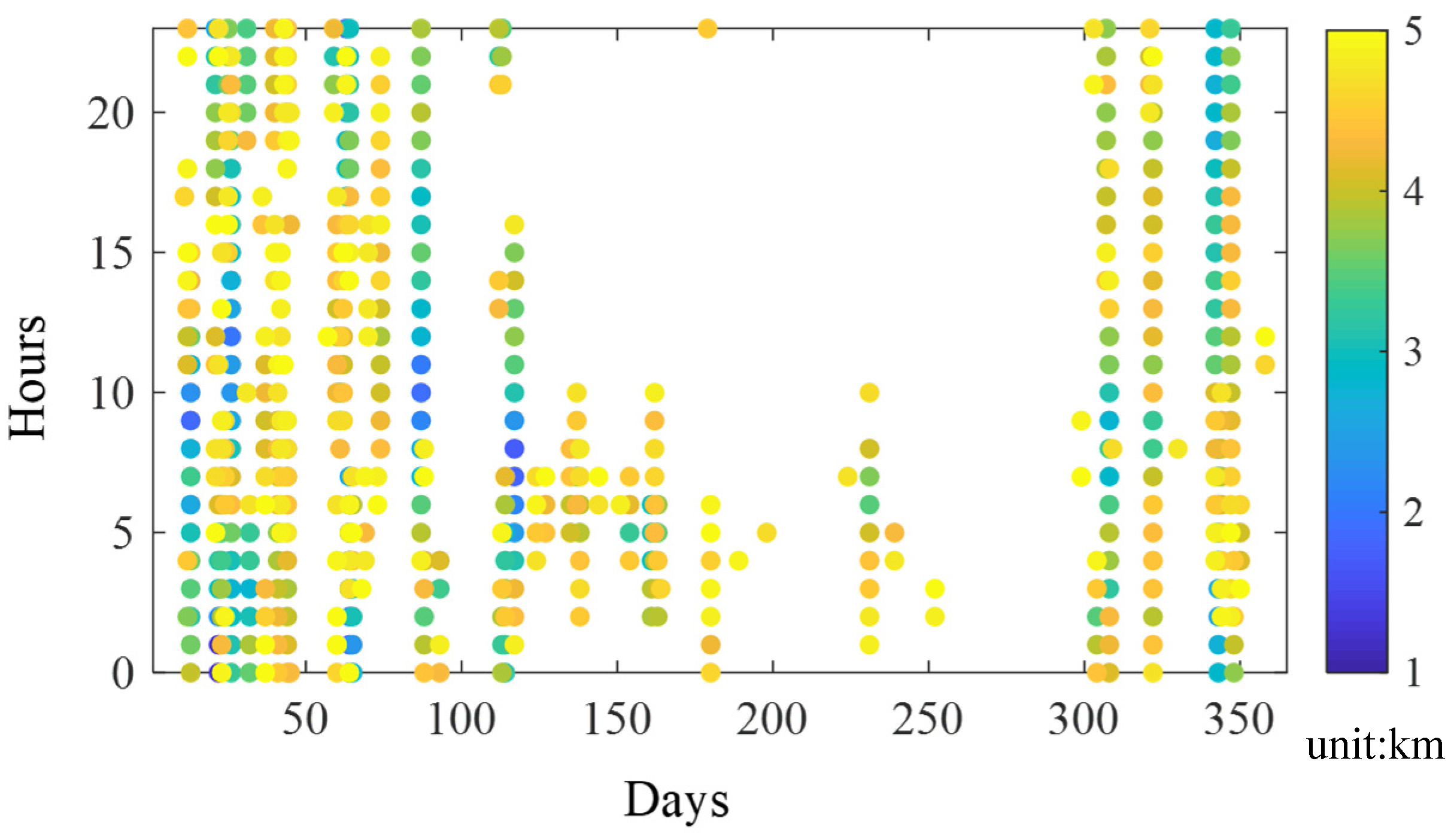
| Winter | Spring | Summer | Autumn | Annual | |
|---|---|---|---|---|---|
| Average | 12.757 | 12.599 | 12.529 | 15.514 | 13.346 |
| Median | 12.489 | 12.692 | 12.312 | 15.696 | 13.286 |
| Standard Deviation | 4.749 | 4.007 | 3.612 | 4.231 | 4.351 |
| Jan | Feb | Mar | Apr | May | Jun | Jul | Aug | Sept | Oct | Nov | Dec | |
|---|---|---|---|---|---|---|---|---|---|---|---|---|
| Average | 12.494 | 11.794 | 12.101 | 12.728 | 12.972 | 12.268 | 11.677 | 13.632 | 15.635 | 15.659 | 15.242 | 13.902 |
| Median | 12.439 | 11.098 | 12.131 | 12.436 | 13.174 | 12.062 | 11.527 | 13.782 | 16.009 | 15.548 | 15.444 | 13.908 |
| Standard Deviation | 4.386 | 4.705 | 4.601 | 3.841 | 3.439 | 3.633 | 2.906 | 3.938 | 3.419 | 4.533 | 4.614 | 4.904 |
Disclaimer/Publisher’s Note: The statements, opinions and data contained in all publications are solely those of the individual author(s) and contributor(s) and not of MDPI and/or the editor(s). MDPI and/or the editor(s) disclaim responsibility for any injury to people or property resulting from any ideas, methods, instructions or products referred to in the content. |
© 2023 by the authors. Licensee MDPI, Basel, Switzerland. This article is an open access article distributed under the terms and conditions of the Creative Commons Attribution (CC BY) license (https://creativecommons.org/licenses/by/4.0/).
Share and Cite
Zhang, L.; Xu, M.; Qiu, X.; Zhang, D.; Liao, R.; Fang, X.; Wu, B.; Meng, F. Analysis of Spatio-Temporal Characteristics of Visibility in the Yellow and Bohai Seas Based on Observational Data. Atmosphere 2023, 14, 1101. https://doi.org/10.3390/atmos14071101
Zhang L, Xu M, Qiu X, Zhang D, Liao R, Fang X, Wu B, Meng F. Analysis of Spatio-Temporal Characteristics of Visibility in the Yellow and Bohai Seas Based on Observational Data. Atmosphere. 2023; 14(7):1101. https://doi.org/10.3390/atmos14071101
Chicago/Turabian StyleZhang, Lei, Mei Xu, Xiaobin Qiu, Dongbin Zhang, Rongwei Liao, Xiaoyi Fang, Bingui Wu, and Fanchao Meng. 2023. "Analysis of Spatio-Temporal Characteristics of Visibility in the Yellow and Bohai Seas Based on Observational Data" Atmosphere 14, no. 7: 1101. https://doi.org/10.3390/atmos14071101
APA StyleZhang, L., Xu, M., Qiu, X., Zhang, D., Liao, R., Fang, X., Wu, B., & Meng, F. (2023). Analysis of Spatio-Temporal Characteristics of Visibility in the Yellow and Bohai Seas Based on Observational Data. Atmosphere, 14(7), 1101. https://doi.org/10.3390/atmos14071101






